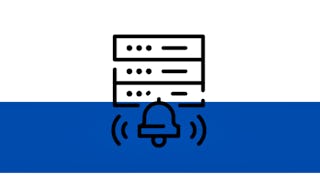This course introduces you to Intrusion Detection Systems (IDS), offering essential knowledge and hands-on skills for detecting and mitigating security threats. As cyberattacks become more sophisticated, learning to protect systems through IDS is a critical skill for IT and security professionals. This course is designed to give you a comprehensive understanding of both Host-Based (HIDS) and Network-Based Intrusion Detection Systems (NIDS). You’ll dive into core components, explore the differences between signature-based and anomaly-based detection, and gain practical experience by operating IDS tools on virtual machines.

Enjoy unlimited growth with a year of Coursera Plus for $199 (regularly $399). Save now.

Introduction to Intrusion Detection Systems (IDS)
This course is part of Intrusion Detection Specialization

Instructor: Jason Crossland
Included with
Recommended experience
What you'll learn
Understand the roles of HIDS and NIDS, their key components, and applications across cybersecurity contexts.
Install and configure IDS solutions on VMs to detect real-time threats in host and network environments.
Compare signature-based and anomaly-based detection methods and configure IDS rules accordingly.
Use quantitative techniques to assess IDS effectiveness, analyzing data to select optimal solutions for security needs.
Skills you'll gain
Details to know

Add to your LinkedIn profile
18 assignments
See how employees at top companies are mastering in-demand skills

Build your subject-matter expertise
- Learn new concepts from industry experts
- Gain a foundational understanding of a subject or tool
- Develop job-relevant skills with hands-on projects
- Earn a shareable career certificate

There are 7 modules in this course
This course provides a comprehensive overview of Intrusion Detection Systems (IDS), focusing on both Host-based (HIDS) and Network-based (NIDS) technologies. Participants will learn to describe IDS components, analyze attack dynamics, and develop use cases for detecting insider threats and DDoS attacks. The course includes practical sessions on installing and operating HIDS and NIDS on virtual machines, as well as configuring tools like Suricata. Additionally, students will evaluate detection methods and conduct quantitative assessments to enhance their understanding of cybersecurity effectiveness.
What's included
1 video3 readings
This course provides a comprehensive introduction to Intrusion Detection Systems (IDS), focusing on their purpose, components, and various types. Participants will explore the relationship between attacks and risk, learning to identify specific attack observables and how they relate to potential threats.
What's included
6 videos4 readings3 assignments
This course provides an in-depth exploration of Host-based Intrusion Detection Systems (HIDS). It begins with a detailed description of HIDS and its critical role in monitoring and analyzing the activities within individual host systems to detect potential security threats.
What's included
4 videos4 readings3 assignments1 plugin
This course provides a deep dive into the mechanisms and methodologies behind Host-Based Intrusion Detection Systems (HIDS).
What's included
4 videos4 readings3 assignments
This course provides an in-depth exploration of Network Intrusion Detection Systems (NIDS), focusing on the essential role they play in cybersecurity.
What's included
6 videos4 readings3 assignments2 plugins
This course provides an in-depth exploration of Network Intrusion Detection Systems (NIDS), focusing on differentiating between signature-based and anomaly-based detection methods.
What's included
5 videos4 readings3 assignments
This course provides an in-depth understanding of how to quantitatively evaluate Intrusion Detection Systems (IDS)
What's included
5 videos4 readings3 assignments
Earn a career certificate
Add this credential to your LinkedIn profile, resume, or CV. Share it on social media and in your performance review.
Instructor

Offered by
Explore more from Security
 Status: Free Trial
Status: Free TrialJohns Hopkins University
 Status: Free Trial
Status: Free Trial Status: Free Trial
Status: Free Trial Status: Free Trial
Status: Free Trial
Why people choose Coursera for their career





Open new doors with Coursera Plus
Unlimited access to 10,000+ world-class courses, hands-on projects, and job-ready certificate programs - all included in your subscription
Advance your career with an online degree
Earn a degree from world-class universities - 100% online
Join over 3,400 global companies that choose Coursera for Business
Upskill your employees to excel in the digital economy
Frequently asked questions
To access the course materials, assignments and to earn a Certificate, you will need to purchase the Certificate experience when you enroll in a course. You can try a Free Trial instead, or apply for Financial Aid. The course may offer 'Full Course, No Certificate' instead. This option lets you see all course materials, submit required assessments, and get a final grade. This also means that you will not be able to purchase a Certificate experience.
When you enroll in the course, you get access to all of the courses in the Specialization, and you earn a certificate when you complete the work. Your electronic Certificate will be added to your Accomplishments page - from there, you can print your Certificate or add it to your LinkedIn profile.
Yes. In select learning programs, you can apply for financial aid or a scholarship if you can’t afford the enrollment fee. If fin aid or scholarship is available for your learning program selection, you’ll find a link to apply on the description page.
More questions
Financial aid available,

